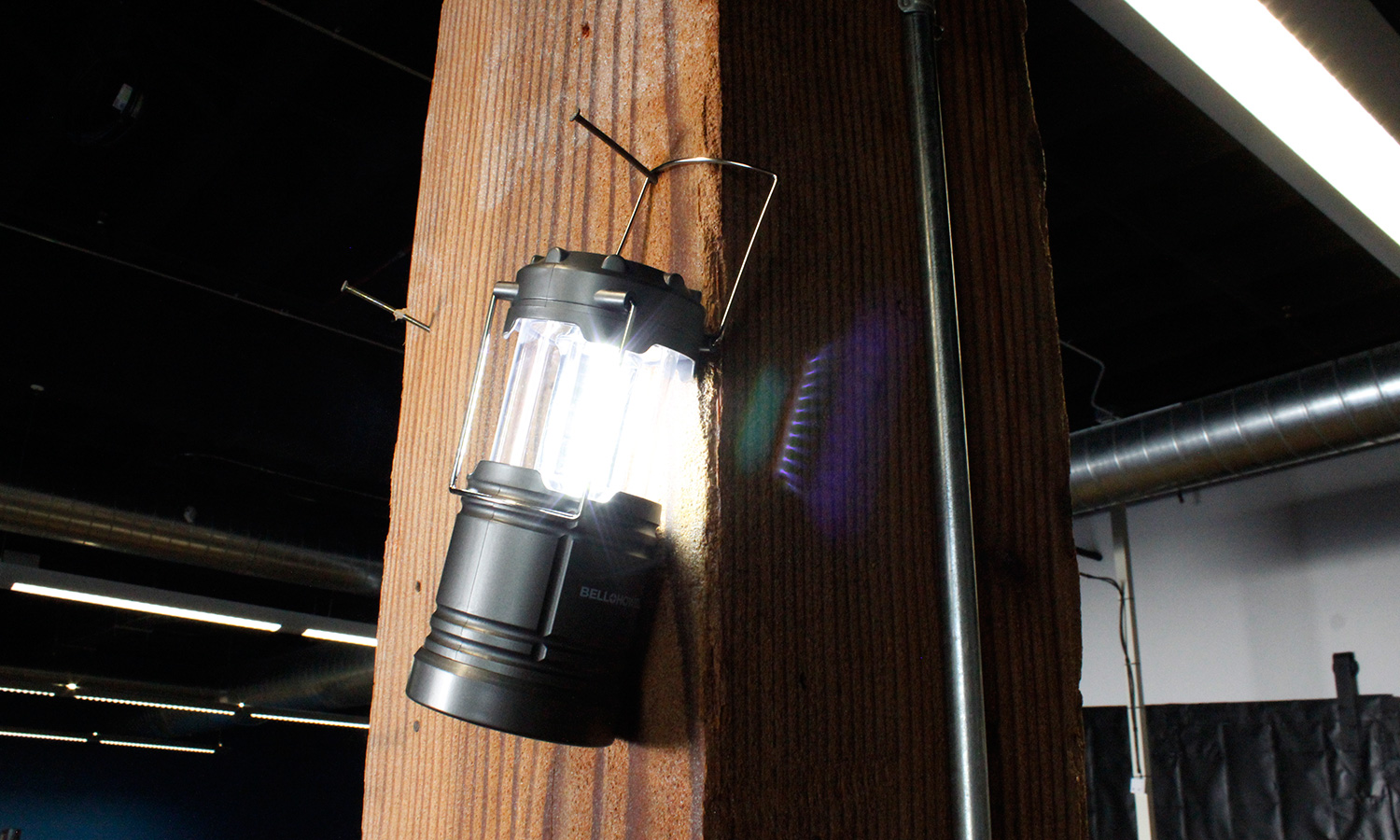Tom's Guide Verdict
The Bell + Howell Tac Light Lantern makes some pretty big claims, but we were impressed with its days-long battery life, performance under harsh conditions and genuinely bright light.
Pros
- +
Super long battery life
- +
Works under water
- +
Stays lit even after melting in fire
Cons
- -
Plastic construction is flimsy
- -
brightness drops off after an hour or two of use
- -
Not all claims are realistic
Why you can trust Tom's Guide
If you've turned on daytime TV in the past year, there's a good chance you've seen the ads for the Bell + Howell Tac Light Lantern.
The little lantern is shown in quasi-military use, and the upbeat announcer makes some big claims about the brightness, durability and unbeatable value of the $20 lantern. We wanted to see just how good it really was, so we bought a couple of them and took them to our testing lab to find out.
Commercial Claim Report Card: Tac Light Lantern
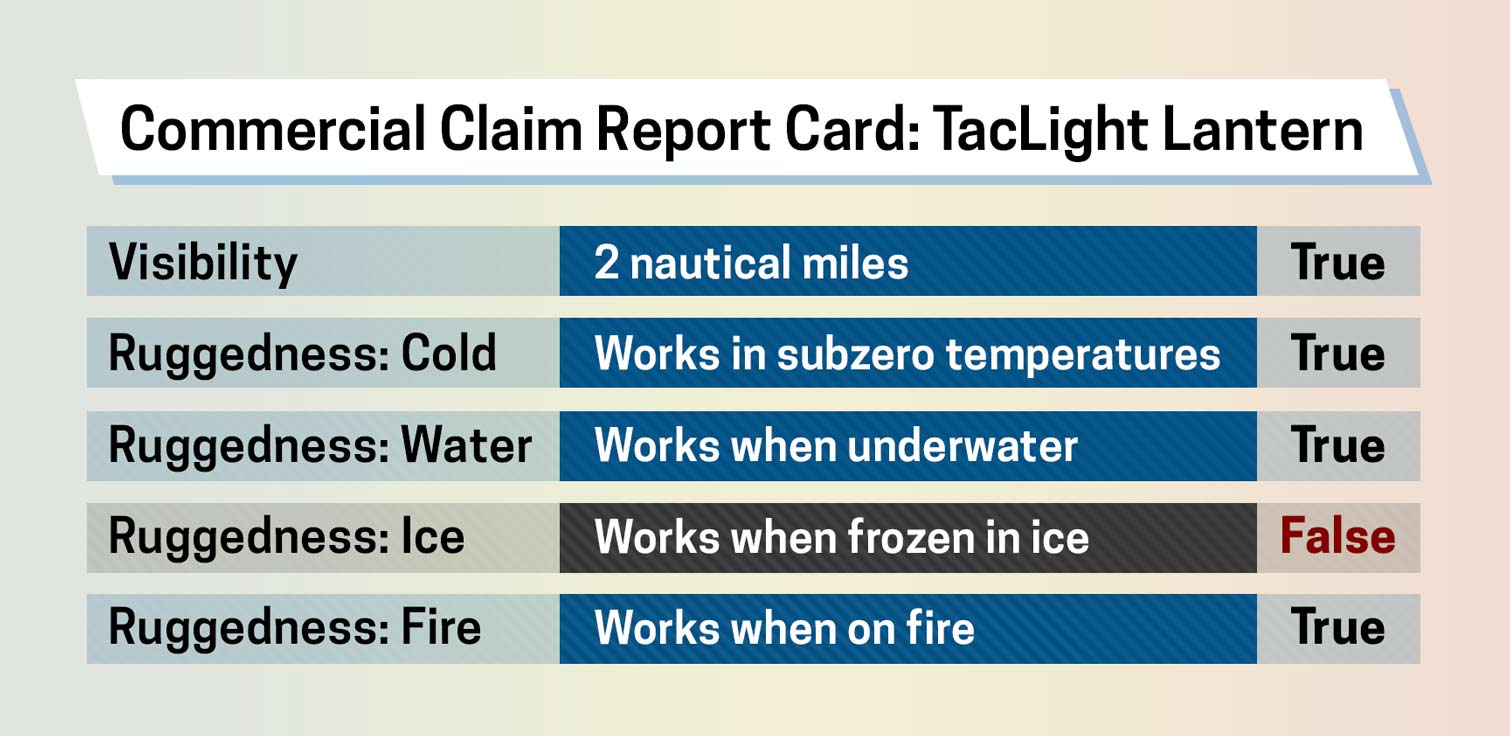
Design
The lantern's metallic gray finish is only skin-deep — a layer of paint over plastic construction. You can also get the lantern in other metallic colors — like copper, red, green or black — but the metallic sheen is still plastic.
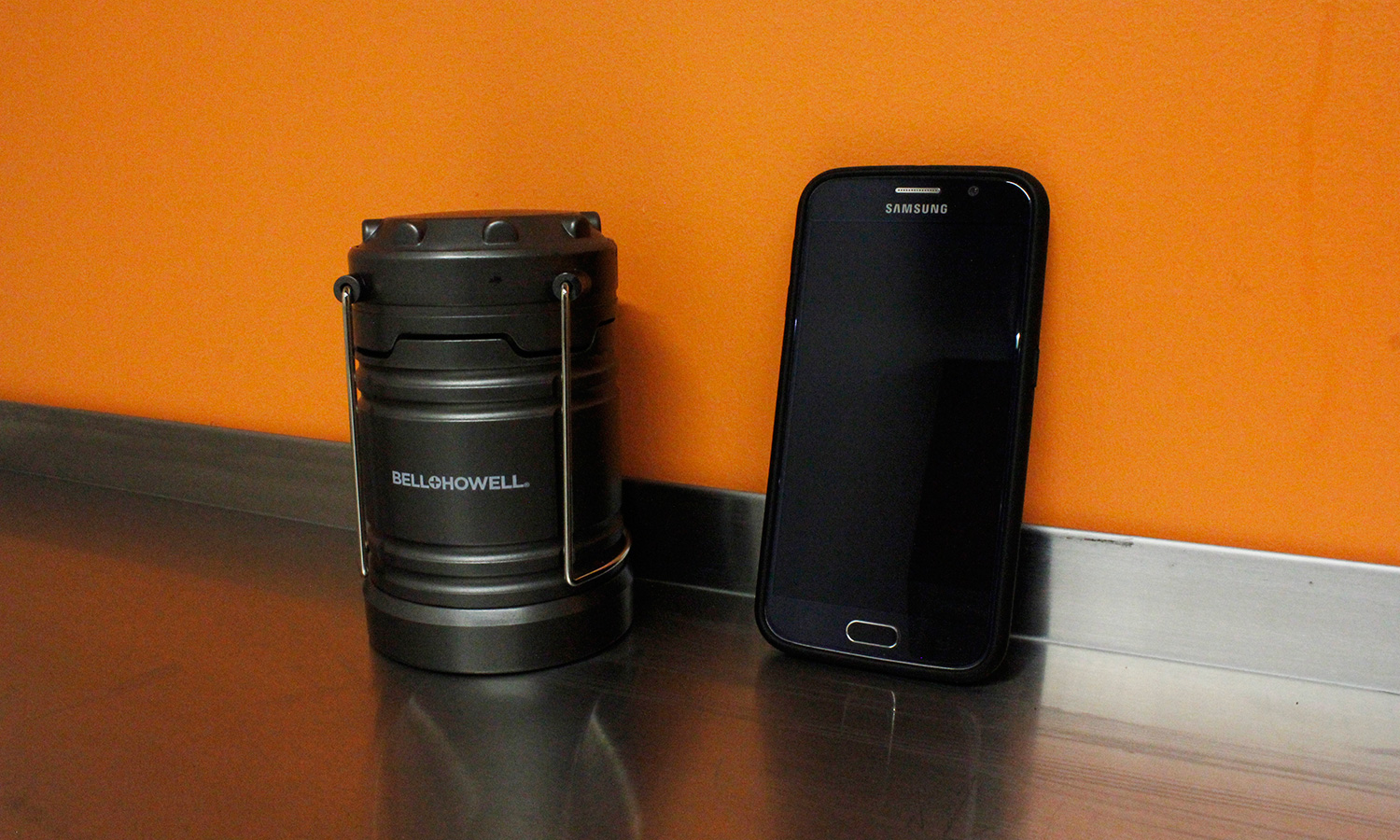
The lantern's infomercial boasts that the Tac Light is "smaller than a smartphone," but that's only sort of true. When closed, the lantern's height is shorter than the overall length of a smartphone, measuring about 5.2 inches tall and 3.25 inches across. However, it has a cylindrical design that won't fit in your jeans pocket (more like a coat pocket).
When extended, the lantern is 7.4 inches tall, and the swiveling handle adds another 3.5 inches. The whole thing weighs 0.75 pounds with the batteries installed.
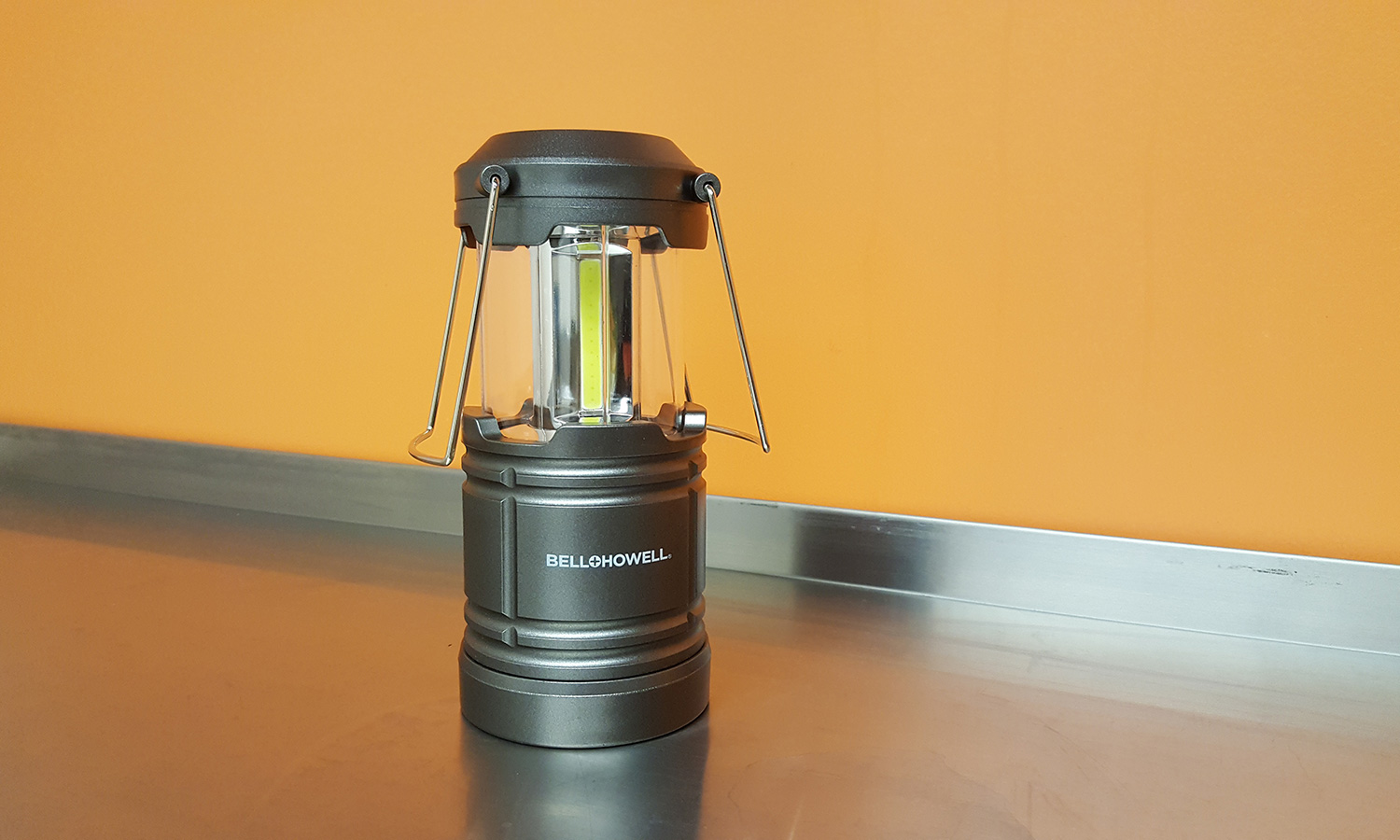
The body of the lantern is a two-piece design, with a clear plastic housing for the LED lamps and an outer housing sleeve. To turn on the lantern, you simply pull it open; a built-in switch activates the LED lamps as soon as the lantern begins to extend. That extending design gives you some control over how much light the lantern puts out, but it doesn't change the brightness of the LEDs.
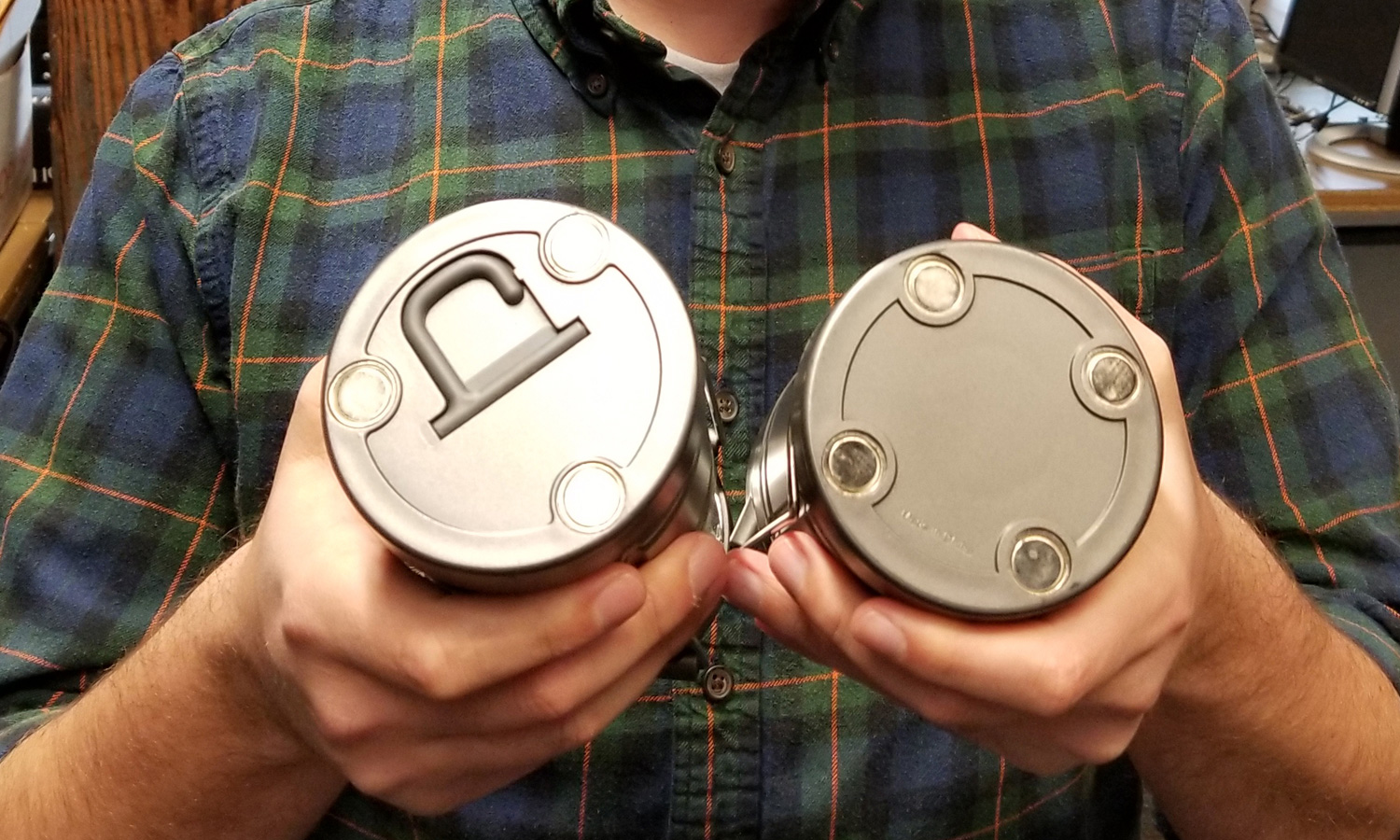
On the bottom is a baseplate, which unscrews to provide access to the battery compartment. On the bottom of the baseplate are magnets that let you stick the lantern to metal surfaces, like metal shelving or the hood of a car. The magnetic base seems to be one of the only features the Tac Light offers that its many clones do not.
There is also some variance in the design, even across what looks like the same model. We tested two models for this review, and one had four magnets on a flat base, while the other had three magnets with a folding hook set into the base. There was no indicator on the box or on the various online pages to determine which you might get when purchasing the lantern.
Claim: Visible for 2 nautical miles
The infomercials for the Tac Light Lantern boast that the lantern has a visible range of "2 nautical miles," which sounds pretty impressive. Translating for landlubbers, that works out to 2.3 regular miles.
(Elsewhere on the Amazon product page, a separate claim says the lantern "Can be seen up to five miles away!" We're significantly more skeptical about this claim but were not able to test it.)
To test the 2-nautical-mile claim, we drove out to the Ogden Bay Waterfowl Management Area, which is away from city lights and traffic, and relatively flat. However, finding a 2.3-mile stretch with an uninterrupted line of sight was difficult even in this relatively flat managed wetland. Despite multiple attempts to find a suitable location to test the 2.3-mile-visibility claim, the best we could do was a 1-mile test. However, when we were 1 mile out from the lantern, with a full battery and low moonlight, the lantern was plainly visible to the naked eye. Though we couldn't test the specific claim, we feel confident that the touted 2.3-mile visibility is also realistic.
Durability Claims
The Tac Light infomercial makes several distinct claims about the lantern's rugged design. Some of these claims are stated clearly, and others are implied by the imagery of the ad. All of these claims are restated, with slight changes in wording on the product website and product pages on Amazon and Walmart.
Specifically, the lantern is touted as working in extreme temperatures, when submerged in water, when frozen in ice and even while on fire. With claims like that, we had to see how well the lantern really held up in those extreme circumstances.
Claim: Built to withstand extreme temperatures
First, Bell + Howell makes some pretty specific claims about the Tac Light Lantern's ability to withstand extreme temperatures and survive "even the coldest conditions." In the product description, the company touts the lantern's ability to "withstand subzero temperatures" and recommends taking it along for everything from shoveling snow off your driveway to taking ski trips and mountain hikes.
To test this claim purely on the basis of cold temperatures, we installed a fresh set of batteries and put the glowing lantern in our lab's freezer, set to minus 2 degrees Fahrenheit. After the lantern spent several hours in those subzero temperatures, we checked in on it, and it continued to glow just as brightly as it had at room temperature.
Result: The lantern holds up well to extreme cold.
Claim: Works underwater
The commercial also claims that the lantern is water-resistant and even illustrates this point by submerging the brightly lit lantern in an aquarium, complete with fish.
To be honest, we had our doubts. The screw-on base, which covers the battery compartment, had nothing like a rubber gasket or O-ring to provide waterproofing. While the lantern might work when splashed or submerged briefly, the lack of any actual seal made me worry that submerging this device for more than a moment or two would quickly leave it waterlogged and inoperable.
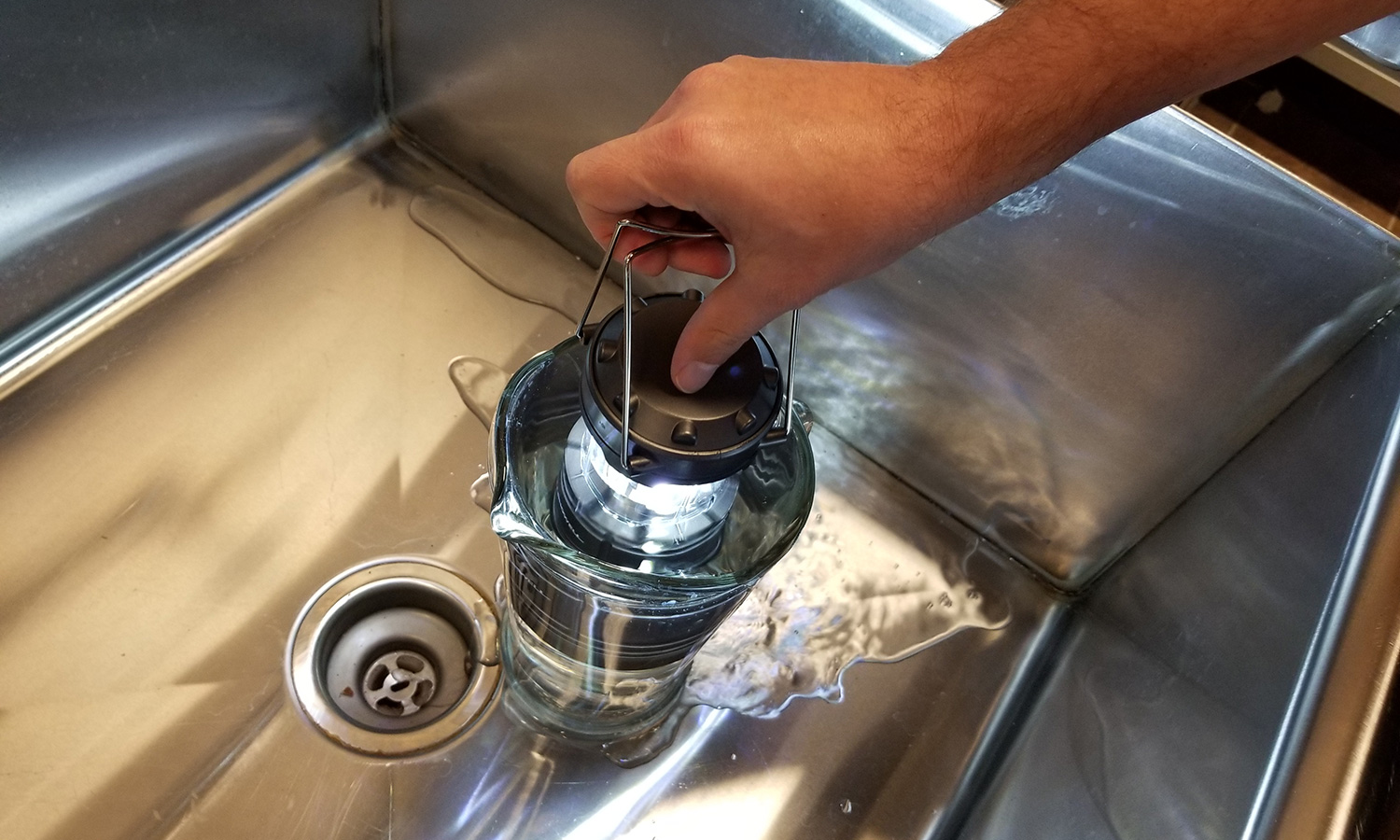
To test this claim, we ran two tests. First, we dunked the lantern vertically into a full pitcher of water. Second, we submerged the lantern horizontally in a larger container of water for complete submersion for an extended period.
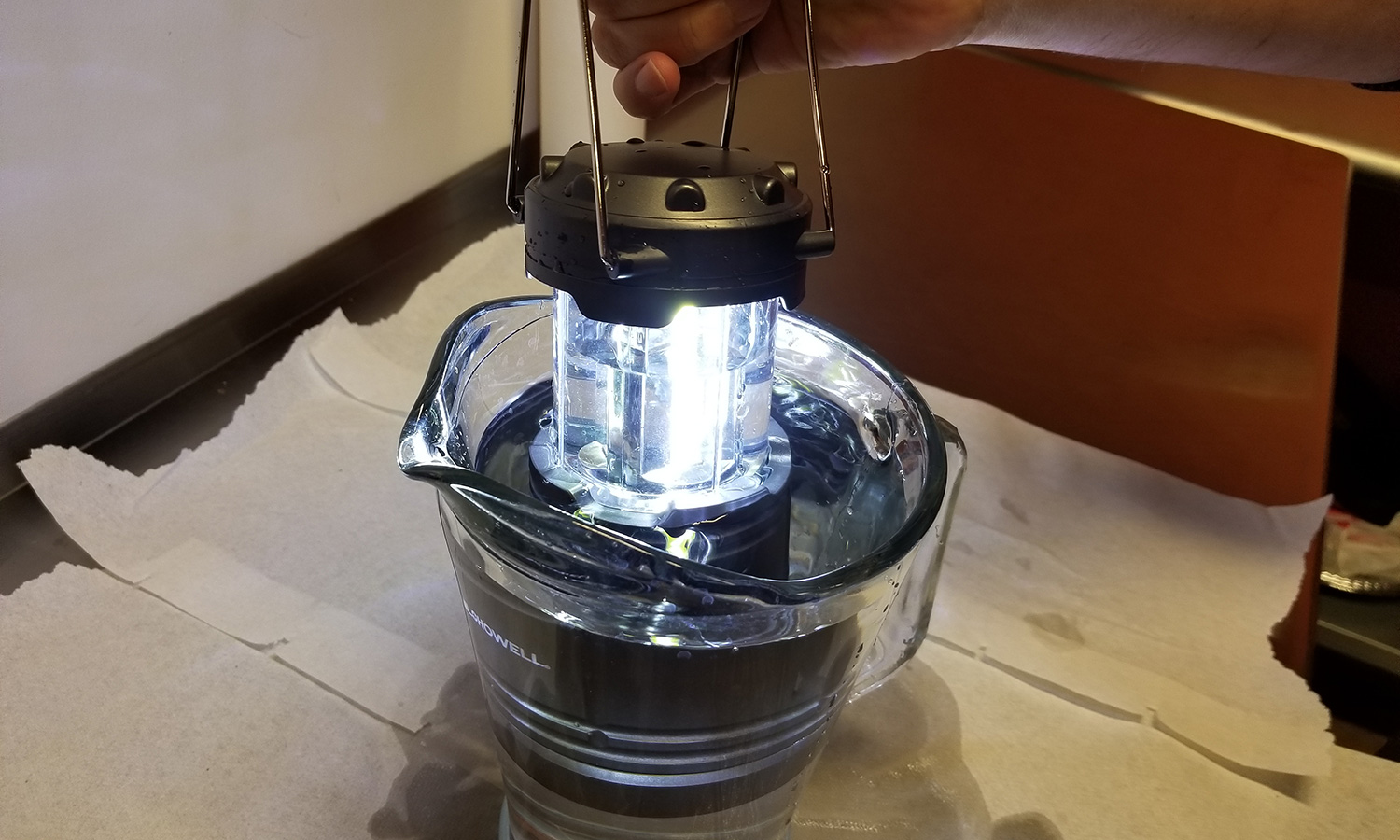
When we dunked the lantern in the pitcher, we saw something curious. It not only failed to keep the water out but actually filled up with water quite quickly. Watching the clear plastic of the lantern, you could see the waterline rise and bubbles trail out until the entire lantern was not only under the water, but filled with it. Despite this, the lantern kept working.
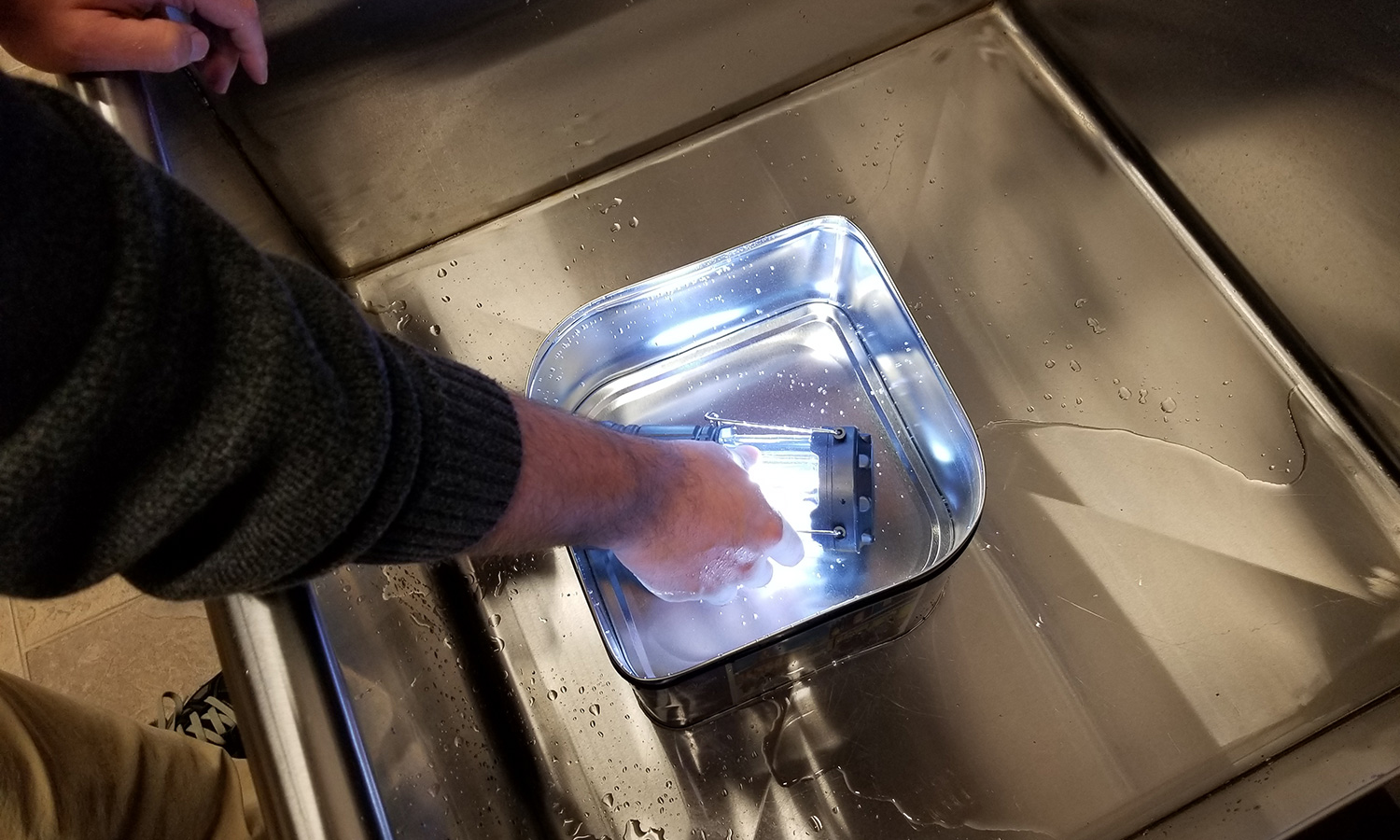
In the second test — submerging the lantern for a longer period — the lantern again filled with water but never once stopped working, even after spending several hours under water.
Result: The lantern works when splashed, dunked or left underwater.
Claim: Works while frozen in ice
We also had doubts about the claims that the Tac Light could work while frozen in ice. If you can't trust something to keep water out, then things only get worse in subfreezing temperatures. Water that has seeped in without causing damage can freeze and expand, potentially breaking the flimsy plastic parts. But mostly, we were intrigued, since the video pretty clearly showed the lantern in a block of ice. Looking at the cheaply made plastic lantern in our hands, that was the most difficult thing to believe.
Testing this claim was as simple as re-creating that scene. Having already submerged the lantern in a container of water, we simply left it submerged and placed the container in the freezer. Freezing 2 to 3 gallons of water solid takes more than an evening, so we left it freezing over the weekend. Finally, to accurately re-create the shot from the infomercial, we had to break the lit lantern free from its icy encasement.
During the freezing process, we regularly checked in on it to make sure it was still functional. It did well overnight, but the next morning, with plenty of freezing left to do, it stopped working. At this point, it had spent less than 12 hours in the freezer.

We continued on, letting the ice freeze solid and finally removing it from its container the following Monday morning. Though the light on the lantern had gone out, the bits we could see appeared undamaged, so we had high hopes for using the lantern again. With a hammer and chisel, we cracked the ice block in two, and then broke off chunks of ice, chipping away until the lantern was free.
That's when we realized that a lantern that fills with water when submerged becomes a lantern filled with ice once frozen. The lantern's lamp and base had both filled completely and, at this point, were solidly frozen.
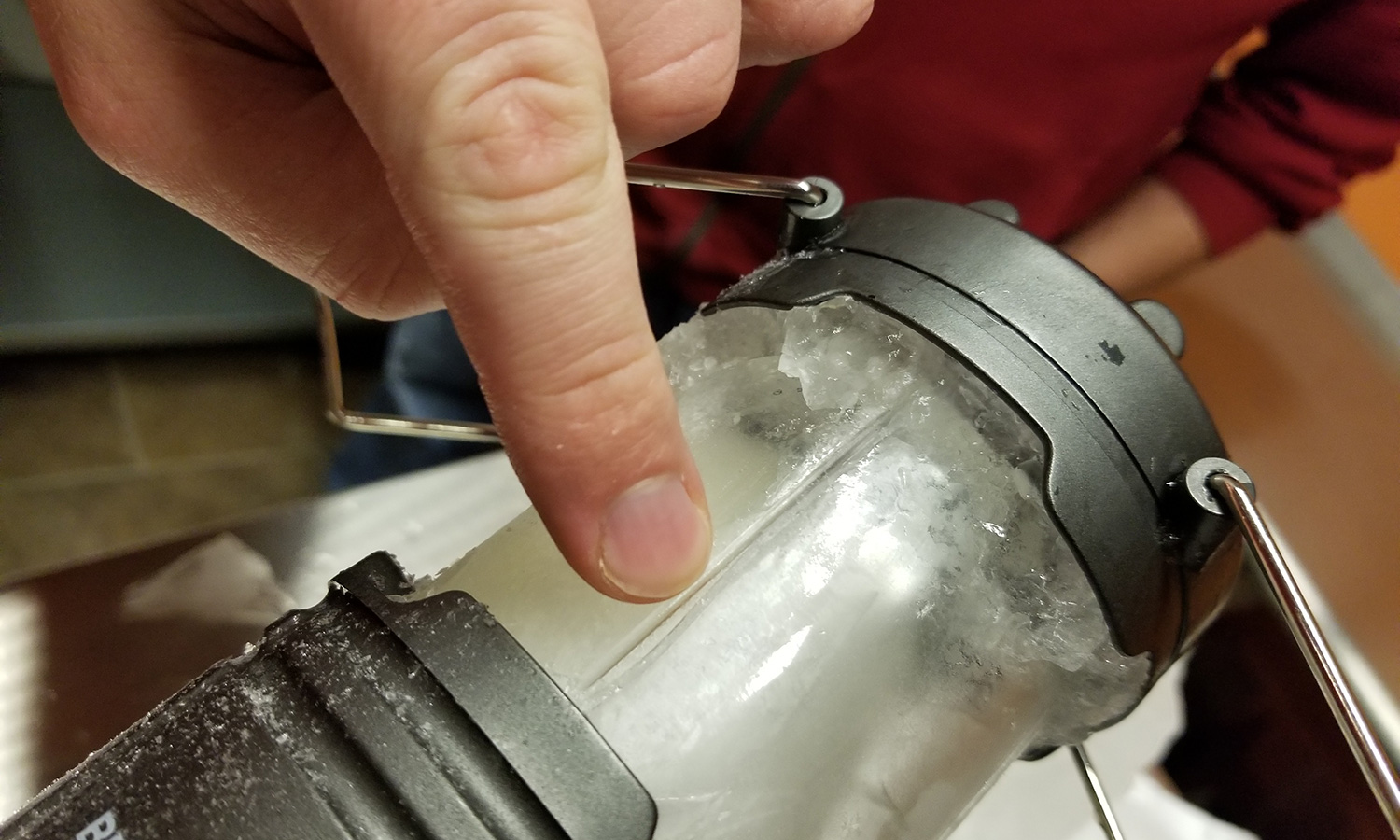
The swelling of ice inside the lamp caused a crack in the transparent plastic, and the long exposure to moisture left the battery compartment corroded. Even after we thawed and dried the lantern, it never worked again.
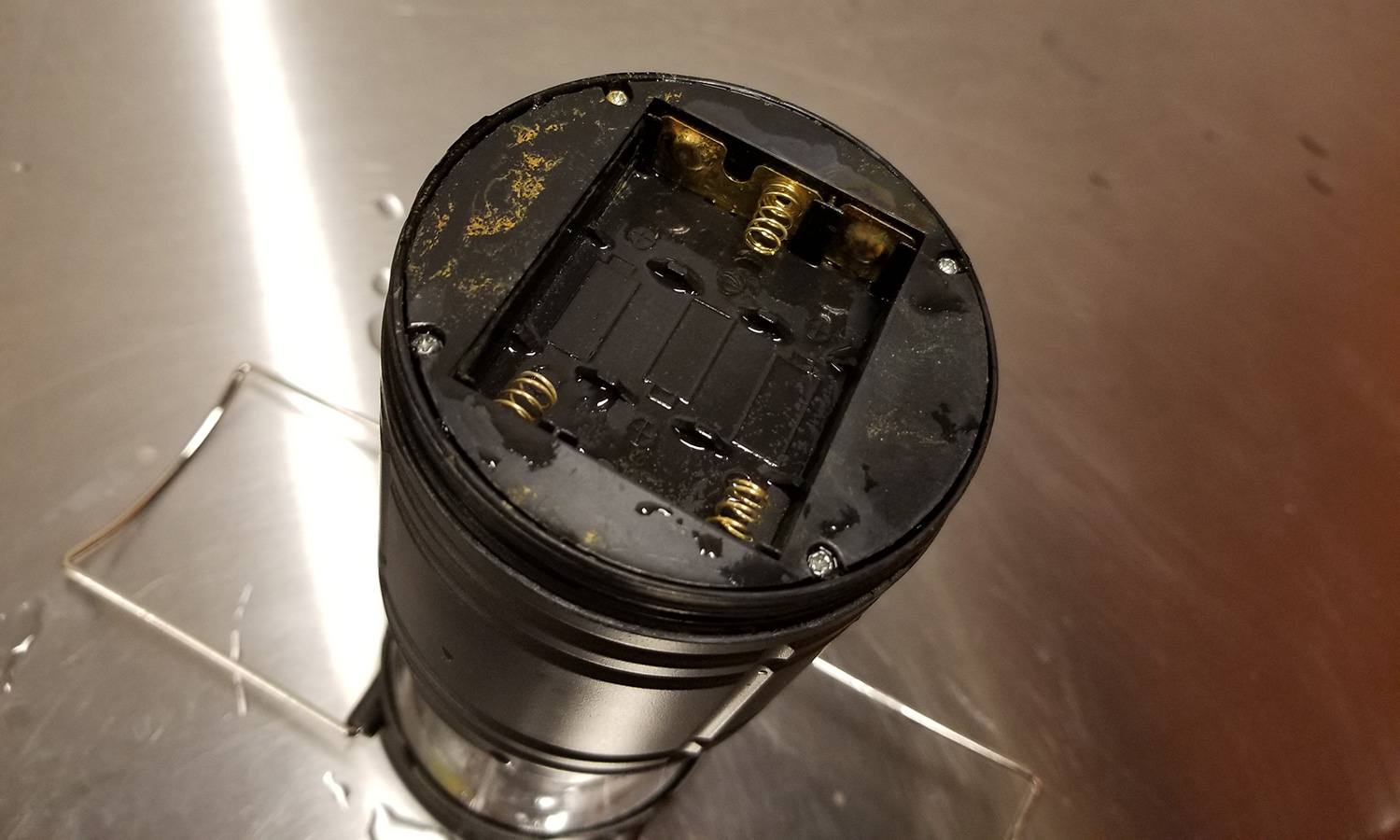
Result: Stopped working and never worked again.
Claim: Works while on fire
Last but not least, Bell + Howell touts that the Tac Light works while on fire. The ads actually show the lantern sitting in a lit campfire, among the glowing embers like a foil-wrapped baked potato.
To test this claim, we re-created those circumstances with a fire of our own, but with two differences. First, we wanted to determine if the lantern would continue to work while in the fire. We also wanted to see just how long it would last under those fiery conditions. Given the use of inexpensive plastic in the construction, we expected portions of the lantern to melt quickly and render it unusable.

We tested this by building an ersatz campfire in a wheelbarrow in an empty lot near our offices. Because our original lantern didn't survive the ice test, we picked up another at our local Walmart. Once the flames were going, we set the lantern right in the flames. As expected, it didn't take long for the plastic to begin to bubble and melt — 20 seconds, according to our timer. But even after the lantern was fully deformed and blackened, and we felt safe in extinguishing the blaze, we were genuinely shocked to see that the LEDs were still glowing.
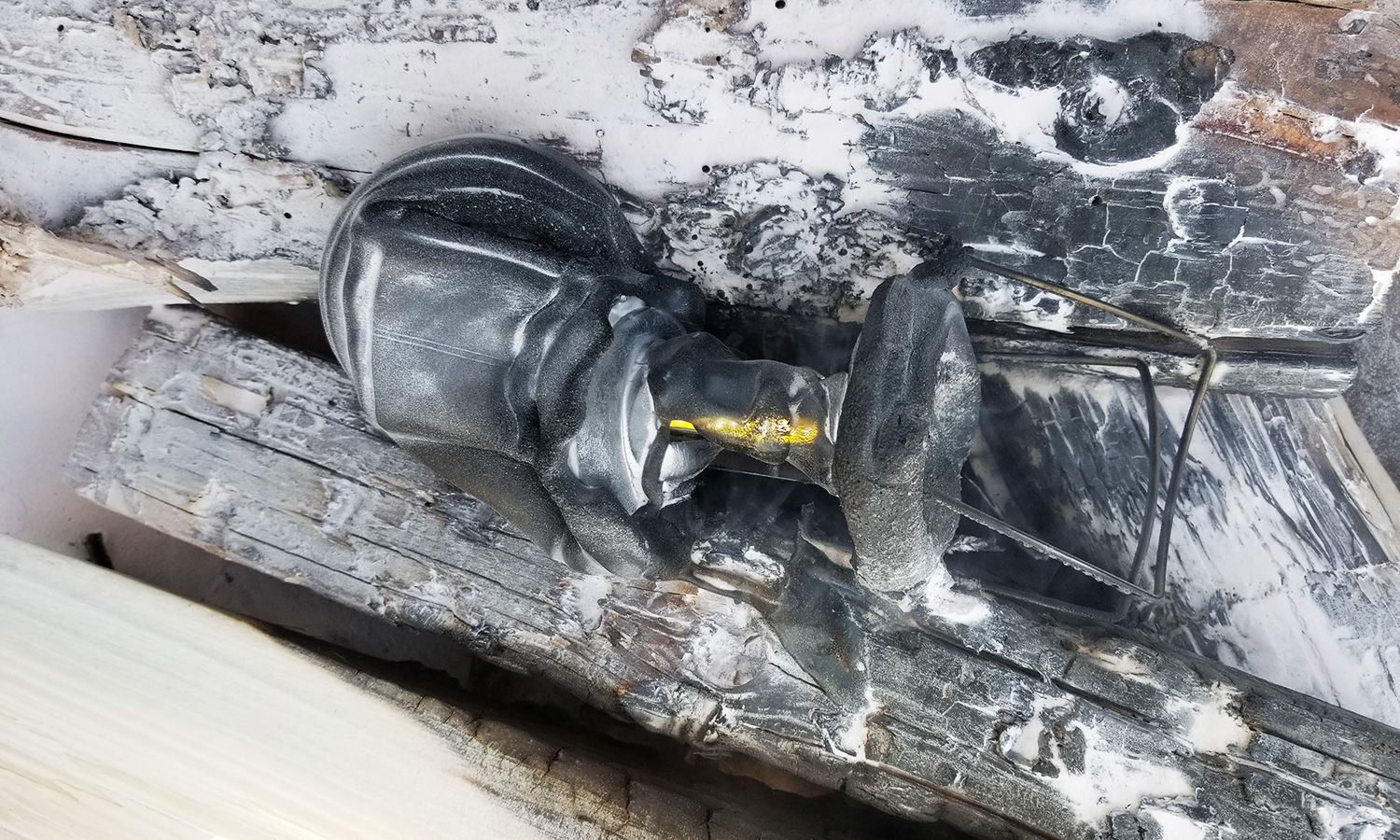
Obviously, the lantern is unusable at this point, but the melted corpse of the Tac Light Lantern was still putting out light, even after a fire extinguisher had put an end to our campfire. While it was far from unscathed, that is some impressive durability.
Result: Melted and charred, it still glowed.
"Not Seen in Stores"?
It's not uncommon for products sold on TV infomercials to claim that their brand or design is unique and not available in stores. But the fact is, we got one of our two review units right off the shelf at Walmart. The other was ordered from Amazon. While that might not be a store in the brick-and-mortar sense, you're definitely not restricted to the Bell + Howell website or the toll-free phone number on the ads when you want to buy one of these.
Battery Life
Battery life is one area for which Bell + Howell doesn't make specific claims. Instead, the company mentions the life of the LED lamps, saying "up to 100,000 hours of light." That's pretty confusing, and that kind of vagueness suggests it's entirely intentional.
Elsewhere on the Amazon product page, it says, "No need to worry about the bulb burning out — it's guaranteed to last up to 100,000 hours, giving you an endless abundance of light." Even when it seems clearer that the claim is about the lifetime of the LEDs themselves, it's still phrased in such a way that it could be misconstrued.
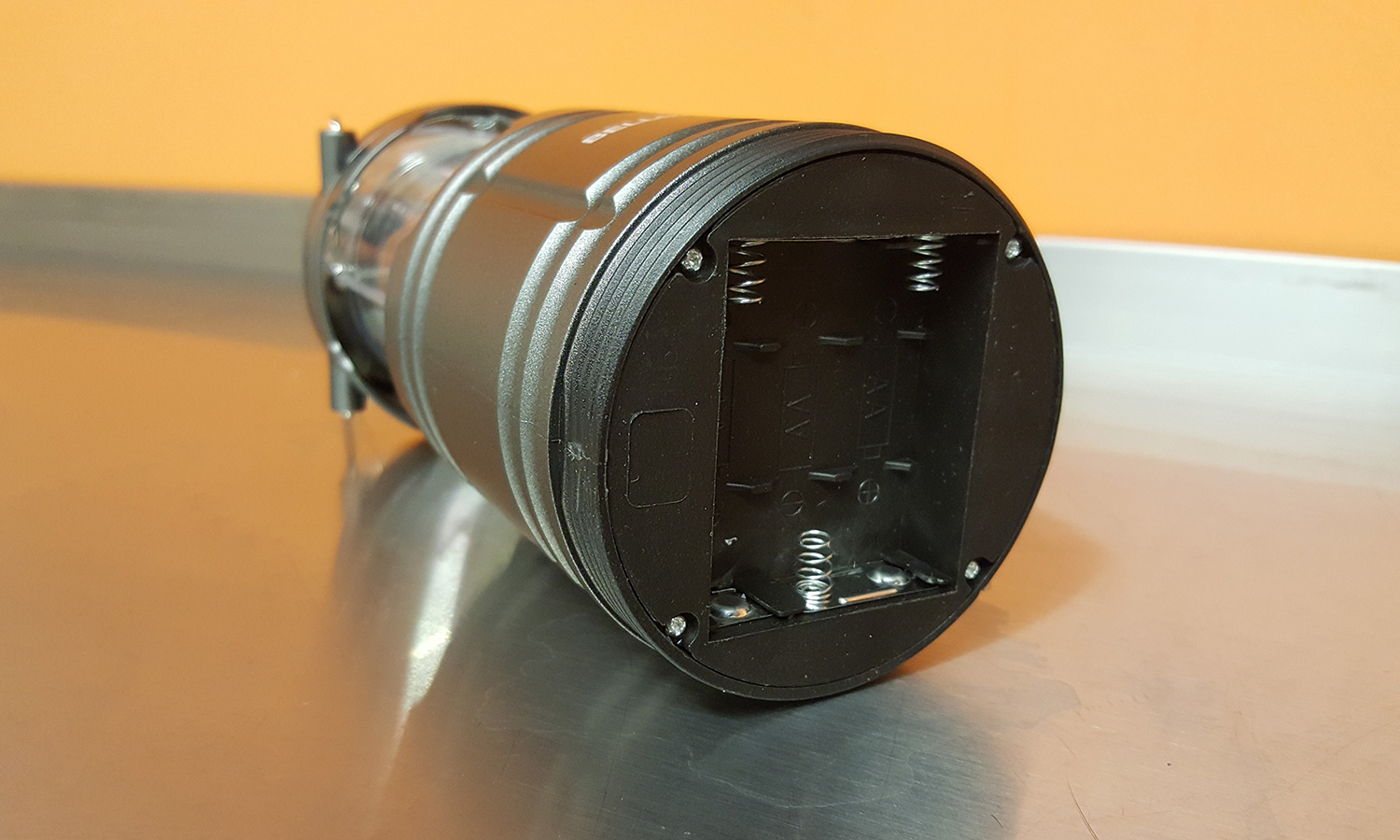
Despite the confusing claims, we needed to see how long you could use the lantern before the batteries ran out. To test the battery life, we put a fresh set of AA batteries in the lantern and set it up in a dark room where it would be undisturbed for the duration of the test. We set up a GoPro camera in time-lapse mode to snap regular photos to record the time and brightness of the lantern, and let it run until the lights stopped glowing.

We half expected the lantern to die out after 8 to10 hours, considering that it runs on just three AA batteries, which aren't known for their longevity. However, the next morning, the lantern was still glowing. That night, it was still glowing. And the next night, and the next. All told, the lantern lasted a full 120 hours before finally winking out.
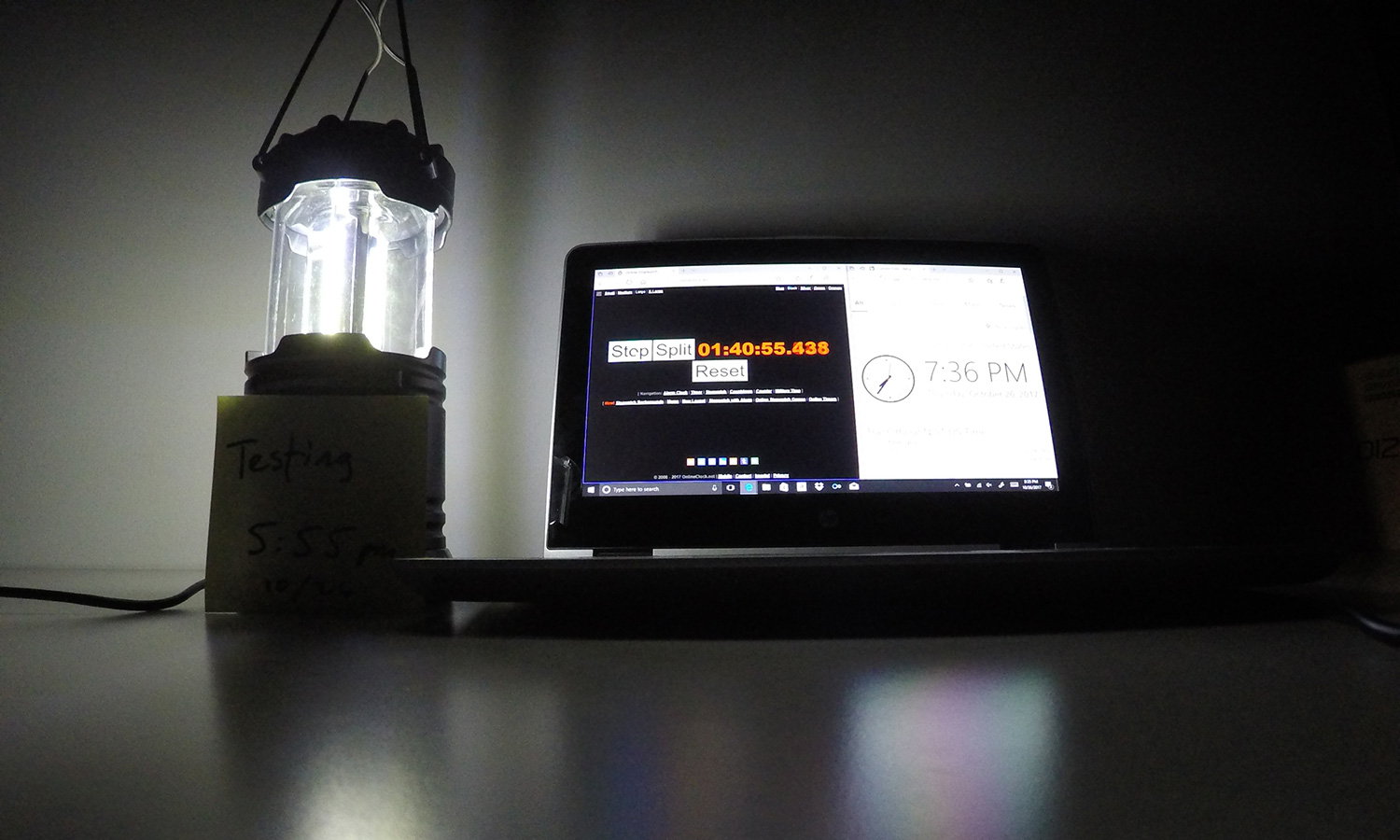
It's worth mentioning, however, that the lantern dimmed considerably over the course of this test, and it maintained peak brightness for only the first 2 or 3 hours of testing. By the time the batteries finally died, the light had dimmed to the point that you could only use the light for reading a book if the lantern were pressed to the pages. Realistically, you should be able to get a full three days of continuous use at a good brightness, and even longer when using it only for brief periods at night.
Bottom Line
We didn't expect to recommend the Tac Light Lantern, based on the price and our initial impressions of the product.
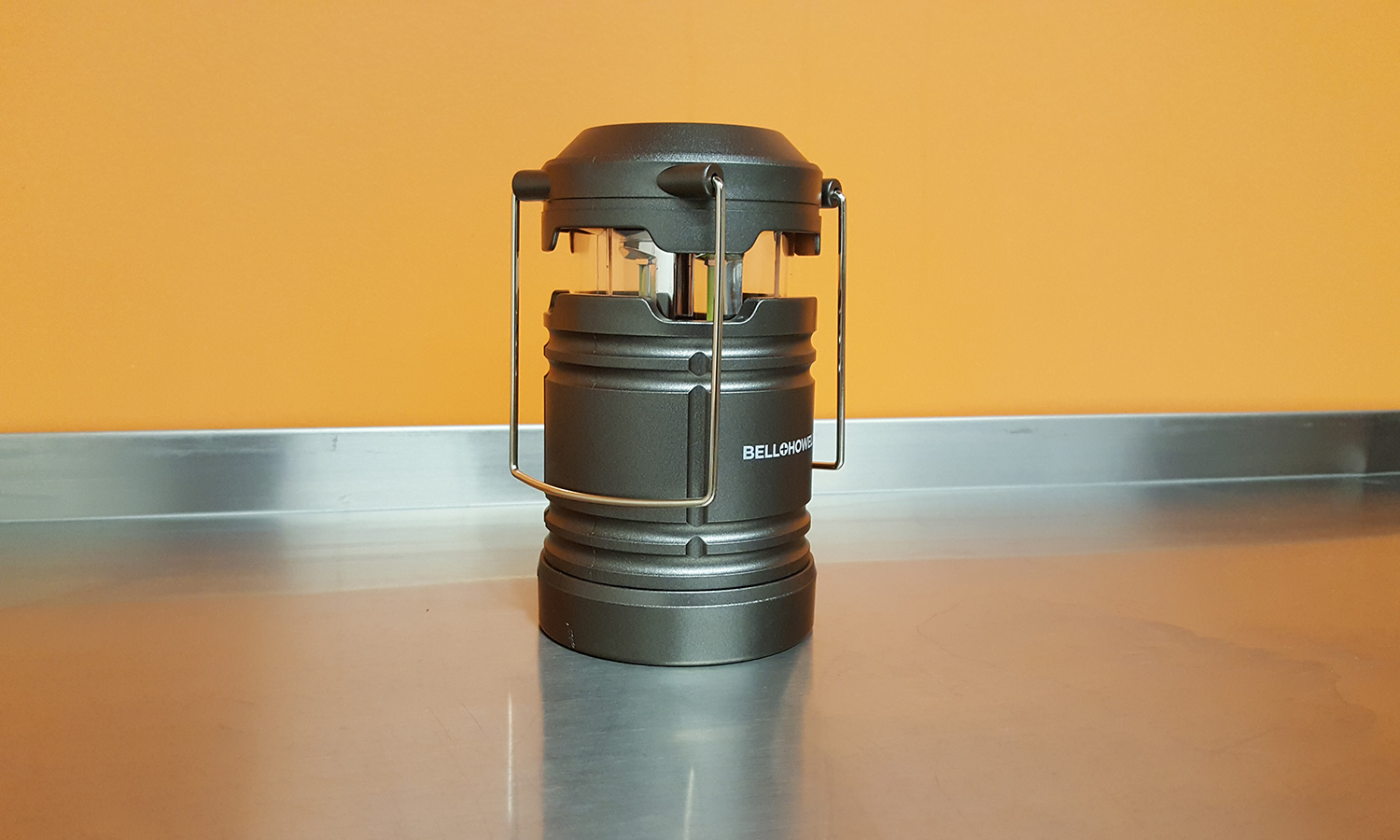
But after putting it through several rounds of testing, we found that it managed to meet or exceed not only our expectations but even most of the farfetched-sounding claims made in the infomercial. If you want to get a reliable, inexpensive lantern for camping or around your home, the Bell + Howell Tac Light Lantern is a pretty sturdy option.
Graphic Credit: Nick Bush/Tom's Guide
Image Credit: Brian Westover/Tom's Guide
Brian Westover is currently Lead Analyst, PCs and Hardware at PCMag. Until recently, however, he was Senior Editor at Tom's Guide, where he led the site's TV coverage for several years, reviewing scores of sets and writing about everything from 8K to HDR to HDMI 2.1. He also put his computing knowledge to good use by reviewing many PCs and Mac devices, and also led our router and home networking coverage. Prior to joining Tom's Guide, he wrote for TopTenReviews and PCMag.
